Sampling in FL Studio can be achieved in various ways, most commonly utilizing the native plugin called Edison. From within Edison, you can record, slice, and edit your audio in many different ways, which can be added to your project.
Sampling In FL Studio
Sampling in FL Studio can be slightly confusing for those new to the DAW, and it is not immediately apparent how to do it.
Luckily, there are a few different ways to achieve it, which we will go over in this FL Studio tutorial.
We will be looking at how Edison can be utilized for sampling, as it is a native FL Studio plugin with all of the sampling features you could need.
We will also look at some other native plugins within FL Studio that can come in handy when quickly sample.
Finding The BPM of A Sample In FL Studio
First, let’s look at how you can quickly find the beats per minute of a sample within FL Studio.
Knowing the BPM of a sample is vital when sampling. It allows VST plugins to slice to the grid more accurately. It will enable you to fit it into your music production correctly.
With your sample loaded in the playlist view, right-click on the small waveform icon at the top right of the sample clip, and select ‘detect tempo.’ You will then see a pop-up window asking to set the general BPM range you think the sample is in.
If you don’t know the general tempo range, try tapping it out with a metronome. There is also an estimated BPM at the top of the pop-up window, which you can try.
Sampling With Edison In FL Studio
Opening Edison
To open Edison, you can right-click on a sample and then select ‘Open In Audio Editor.’ You can also manually open an instance of Edison on a mixer track.
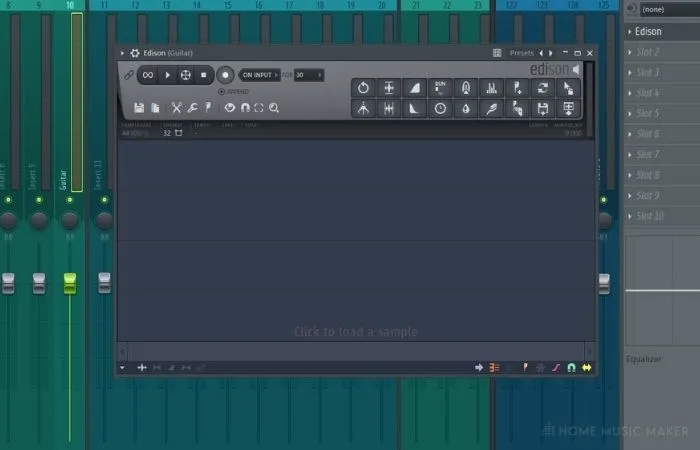
These options will end up with the same results, but the first option can sometimes be an easier route.
Dragging in a sample
Once you have an instance of Edison open, you will want to drag in the sample you wish to use.
If you use the ‘Open In Audio Editor’ option above, you will not need to worry about this step as the sample will already be there in Edison.
You will know you have done this part correctly when the sample’s waveform is visible within Edison.
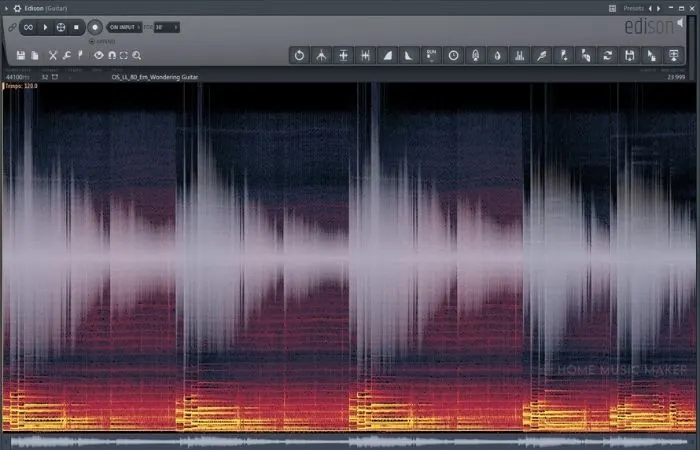
Features Of Edison
Now that you have the sample open within Edison, you can slice it and affect it in various ways.
To slice the sample, you can select the small box cutter icon in the toolbar, which will automatically slice the sample up into smaller sections.
To change the parameters by which it slices the audio file, you can right-click this icon, which will bring up the different slicing options.
If you want to slice by beats on a grid, select one of the ‘Grid-Slicing’ options. If you are looking to slice by transients, try one of the ‘Auto-Slicing’ options.
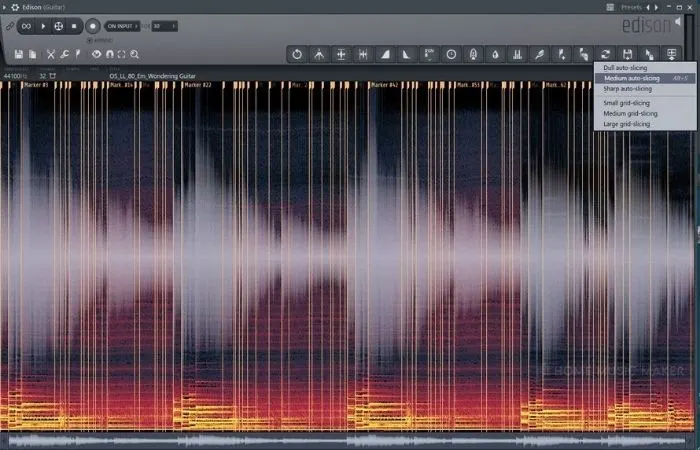
Auto slicing is much better if you are looking to sample something like a drum loop or beat, as it has much more clearly defined transients to work with.
Within Edison, you can also clean up the audio using options such as de-click and de-noise. You can also re-arrange sample or cut sections out simply by clicking and dragging areas of the sample and then pressing the delete key.
Exporting The Samples
Once you are happy with the changes you have made to the sample, you can drag it back out as a WAV file into your project. You can do this by clicking and dragging the file/cursor icon in the toolbar to your playlist, where the audio file will then be placed.
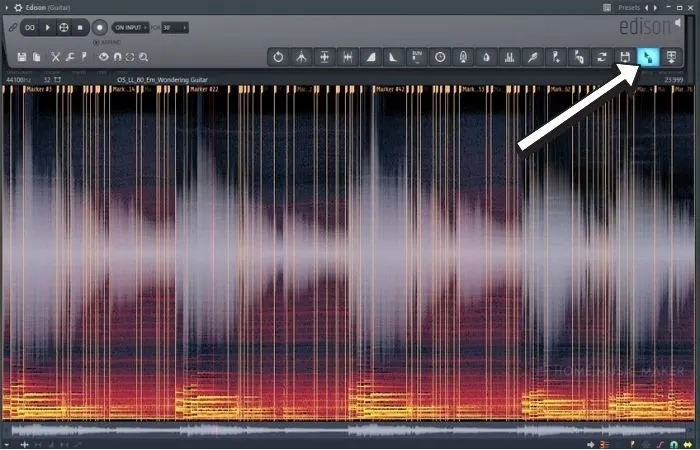
How To Create Your Own Samples In FL Studio
Suppose you are looking to bring together midi or audio slices into a single audio sample. In that case, this can be done through the playlist in FL Studio.
To start with, make sure that the audio you make into a sample is on the same playlist track. Then, right-click on the track, and select ‘Consolidate This Track.’
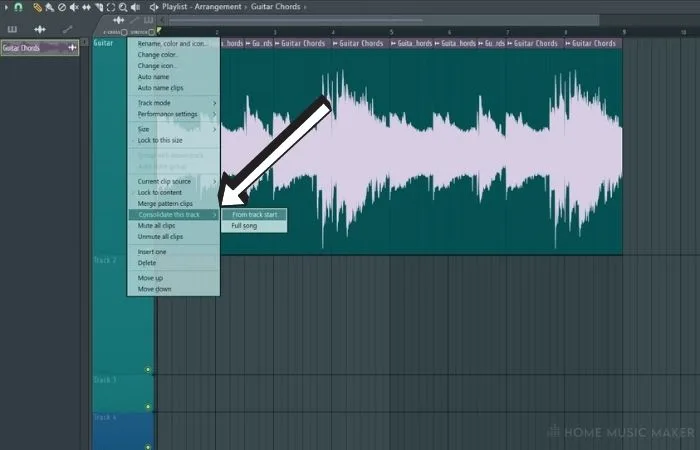
You will then get an options window opening, which allows you to finetune the parameters of the sample.
Once you are happy with the options, click start. You will see that the audio is rendered out as a separate audio clip on its own track within the playlist.
Using Slicex In Fl Studio
Another fantastic native FL Studio plugin that can be great for unique sampling is Slicex. As the name might suggest, it is a quick way of slicing up your sample in exciting ways.
If you drag a sample in, you will notice that it automatically slices it based on the transients within the sample. If you want to create your own slices instead, you can highlight the area you want to make into a sample, right-click, and select ‘Add Region.’
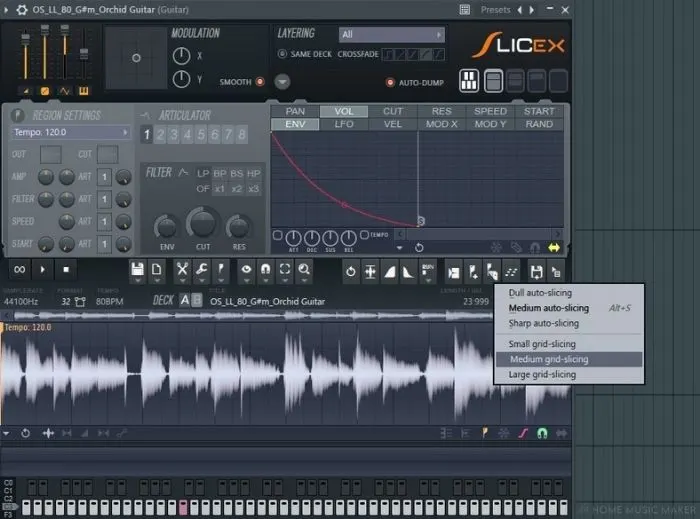
Slicex is handy as it immediately places any new sample regions onto a midi keyboard and piano roll. This means you can start creating new loops with the sample straight away.
Using Fruity Slicer In FL Studio
Another option to quickly slice and sample audio within FL Studio is Fruity Slicer. This relatively simple native plugin is about as simple as they get, looking somewhat like a stripped-down version of Slicex.
As with Slicex, you can either drag one in or click on the file icon to find a sample in your file directory to import a sample. Once the sample is imported, you can click on the box cutter icon to choose which slicing method you would like to use.
As with before, auto-slicing options work via transients, or you can choose to slice by the grid.
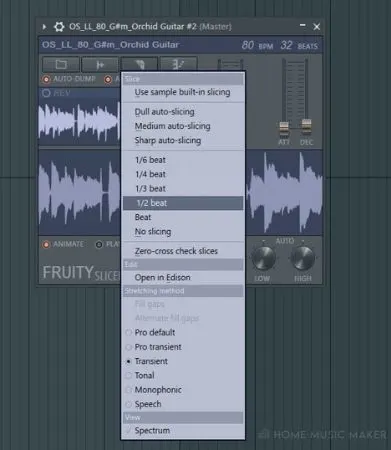
To slice by the grid, you will want to make sure you know the beats per minute of the sample, as otherwise, the slicing will be out of sync.
Related Questions
Why is sampling so important?
Sampling can be a great way to generate new ideas to start a song or add something to a project you have been working on. You have the freedom to change and use samples however you choose. The possibilities of how to use them are virtually endless.
All of this means that being able to sample effectively opens up a wide range of possibilities with your beat-making.
Do you have to know how to sample?
Having a basic understanding of how to sample can be a great way of expanding your toolset as a music producer. Some genres rely heavily on it, such as hip hop and Trap/Trap Music.
It is not an essential skill, and there are many ways of generating ideas that don’t involve sampling.
Why do you need to know the BPM of a sample?
Knowing the BPM of a sample, you are working with means that you understand how to manipulate and slice it while keeping it in time with the rest of your project. It also means that you can stretch it to fit in time with your project much more easily.
Is sampling easier in other DAWs?
All popular DAWs have excellent sampling capabilities these days, so you are not at a disadvantage using one or the other.
Ableton has some great sampling features that put it at the top of the pile, such as a comprehensive sampler and sophisticated sampling stretching algorithms.
Is Edison free?
Edison comes with all editions of FL Studio except the Fruity Editon. Unfortunately, you cannot buy Edison separately from owning a full copy of FL Studio. This means that you cannot get it for any other DAWs as it is a native VST plugin to Fruity Loops.
What is the difference between Slicex and Fruity Slicer?
Fruity Slicer is a more simplified version of Slicex that features much more simplified controls. On the other hand, Slicex offers much more control over manipulating your sample, allowing users to finetune their sounds in more depth.
What are some good sampling plugins?
There are lots of great sampling plugins out there. Some of the most popular include MOTU Machfive 3, LANDR Chromatic, and the Arturia CMI V.
All of these offerings allow for a significant amount of control over your samples and feature lots of interesting creative tools to help quickly generate new ideas with a sample.
Final Words
You will now be able to sample within FL Studio using various methods, utilizing native FL Studio plugins.
Try out these different methods and see which ones work best for your production style.
I also encourage you to start building up a collection of your own sounds and create sample packs for you to use in future projects.
Having a sample folder with all your sampled drum kits, vocals, sound effects, etc., at hand while writing a track can speed up your workflow while offering you unique sounds for your music.

 Want to connect with other music producers for help and guidance?
Want to connect with other music producers for help and guidance?